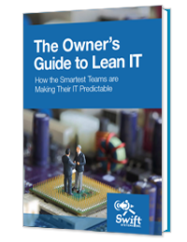How to Setup a VoIP Phone System that Saves Time, Money, & Hassle
Making the switch to Voice over IP (VoIP) is an ideal way to save money and increase the number of simultaneous calls that your organization is able to support without sacrificing the dependability and quality of your calls, as long as your network is setup to support VoIP.
However, many businesses are unhappy with their current VoIP phone system or the service costs and features of their traditional PBX systems. TDM (or legacy phone system) technology is at end-of-life and in need of replacement in many organizations, but many have heard horror stories about making the leap to VoIP. I want to give you key items to look for when you are conducting your phone system review and selection to help you avoid problems, wasted money, and frustration.
When choosing a VoIP phone system and service provider here are the things you need to consider:
- Bandwidth – Because VoIP utilizes your internet service, you must ensure that you have the proper amount of bandwidth to support the new system. As a general rule, 24-80K is needed per simultaneous call. You can modify call signaling to increase or decrease this, but if you want crystal clear calls you will need to set aside about 64K of bandwidth for each call. With that in mind, a 100 person call center with approximate 50% active call volume will require about 3.2 Mbps of bandwidth. But that should not be your total Internet speed, that bandwidth needs to be reserved for your VoIP calls. Modern routers and firewalls often include traffic shaping features that enable you to reserve and prioritize available bandwidth for VoIP calls, sharing it back into the main pool when it is not being used. This is critical. So is having the right equipment (mainly good network switches) in your office for the phones to connect to.
- Feature Options – Consider whether or not you will have the necessary features for your staff to effectively manage the volume of calls made and received? Make sure that the feature set matches your business needs and if in your review you find that phone system features are comparable, make sure that feature management is easy. This is an area of hidden expense and frustration. Many organizations find that over the life of a phone system they will spend five to twenty five times as much on simple move, add, and change requests (known in the industry as MAC requests) as they spend on the phone system. If you cannot configure your system, or easily add new extensions, you may find yourself as an unwitting investor without dividends) in your local phone system provider. A feature may be listed as an option, but it also may require configuration at the admin permission level only or even additional programming. Some systems limit controls and you may want to give this control to a departmental call center manager, such as being able to listen in on the staff calls, rather than having IT support every minor change. Learn more about 3CX Features.
- Telephony Provider – To prevent unwanted phone charges and move to a more scalable structure, SIP trunking is often the best option, but not all providers are created equal. You will want to review the provider SLAs and pricing models closely. Swift Systems partners with providers that offer their customers the very best in value and service, including nexVortex. This ensures your service is a priority for high-quality and fast service at a lower cost than traditional phone providers.

- Manufacture Grade Equipment – High equipment usage requires a higher grade of phone equipment and you’ll want to match your users’ current preferences. Some SIP phones options: Do you need headsets, sidecars, display screens, or wireless phones? Do you want video display capability? Do you want to control the phone using a web interface? How many lines does each user need? Do you want a color interface? Screen savers? Do you need HiDef Voice Support?
- Call Center Capabilities – If you run a support department, a call center solution is essential for your business. This must include call routing and queuing, as well as rich menus and robust on-screen transfer capabilities. Callback features are another modern must-have, and the ability to easily track SLA and gather individual call detail and routing records. Features such as call recording and listen, whisper, or barge-in are also critical to help new workers. Make sure the phone system you choose covers the total number of call center representatives and that you are able to create the package you need for your everyday business transactions without needing to buy additional hardware (other than phones or headsets) as your operation grows.
- Reporting Integration – Most telephony providers include some basic call reporting features. If these meet your needs, great. But, if not you need to make sure that the system you select provides an easy means for exporting CDR (Call Detail Records) out of the system in standard format so that you can use one of the many commercially available call reporting or standard reporting suites to give you proper insight into the volume, route, and length of calls, among other critical indicators.
- Phone System Technical Service & Support – A complete assessment of your current phone system and network is a part of an effective replacement effort. That effort should take into account design, call route paths, routing changes based on new options, infrastructure, bandwidth usage, disaster recovery needs, and other setup requirements to ensure you receive the overall best service possible.
- On-Premise or Hosted VoIP – The benefit to a cloud service provider is that you have an offsite system that will remain operational even if the power is off at your office. However, an onsite system also provides benefits (including the avoidance of built-in hosting fees that raise the long term cost of hosted VoIP). Either way, you are going to need a provider who will take responsibility for your call quality and include a network setup. Many low cost providers simply say, “if it works from here, it is your problem” or “this is a network issue, call your IT provider”, and neither answer is good enough for a production business phone system.
Swift Systems specializes in hosted and onsite VoIP phone systems using best practice network and VoIP design principles to architect high value low cost complete phone system solutions – we bundle internet, hosting, and our guaranteed 24/7 local technical support so that you receive the best support now and in the future.

IT systems are foundational to modern businesses. Too often, that foundation is unsteady. Unpredictable outages, insecure networks, and unreliable performance from mission-critical systems can jeopardize your entire business.
There’s a better way. Learn how.
Get in touch with us for a free consultation with one of our technical experts. We’ll review your current systems, assess your needs, and identify the coverage options to best meet them.
Get in touch with us by phone:

